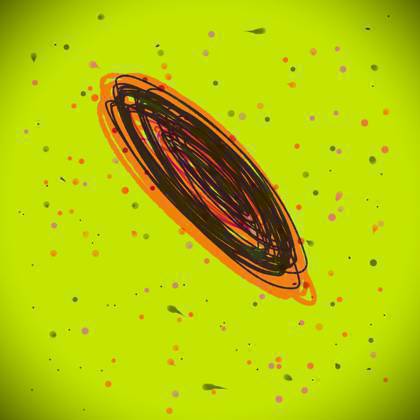

 Deepak Chopra, MD, FACP, FRCP
Deepak Chopra, MD, FACP, FRCP

Modern physics has been shaped by great minds, yet somehow physics hasn’t explained what the mind is. For decades consciousness was not a respectable area of inquiry in physics, yet the great quantum pioneers over a century ago were keenly interested in the topic. We can’t go back to the future, however, because quantum physics isn’t suddenly going to consult its forebears.
More importantly, when such eminent figures as Max Planck, Erwin Schrödinger, and Werner Heisenberg declared that consciousness was a basic trait of the universe, they were offering an opinion—they had no scientific proof to back up their opinion. Such proof, in fact, would have to account for the behavior of the quantum field as the fundamental ground of reality. If consciousness doesn’t fit into the quantum field, the mind will remain contentious as debated among scientists, philosophers, and spiritual thinkers.
So, how can we ever explain the intricate relationship between consciousness and the quantum field, which has profound implications for human existence in the universe at large? One way forward is to apply the same word, field, to both the quantum and to the mind.
Consciousness, as described by proponents of this viewpoint, isn’t individual. Instead, it is a vast field that individuals share in. This field encompasses myriad possibilities. It is the source from which thoughts, sensations, images, and feelings emerge and then dissolve back into, just as subatomic particles do in the quantum field. Mental experiences and quanta are transient, shaped by uncertainty, and are, in essence, energetic fluctuations within the consciousness field.
Thoughts are like confluences of possibilities emerging into physical reality, which parallels how we choose to say specific words that emerge from all the possibilities in a person’s vocabulary. As confluences of possibility waves, mental activity instantly crosses the boundary into biology, which we know because a thought, if strong enough, can alter metabolism, raise blood pressure, affect heart rate, and even create genetic imprints.
All of this points to the infinite nature of the quantum and the consciousness field, which do not obey the convenient division we make between mind and body. It is more correct to say that consciousness is the body and vice versa, once you trace them back to their source.
Furthermore, this conclusion challenges the notion of local realism, i.e., the world of isolated physical objects and events reported by the five senses. Local objects and events, whether we are talking about interstellar dust, neurons, cloud nebulae, or clouds in the sky, aren’t separate but entangled with one another via the field.
This entanglement long recognized at the level of the quantum, suggests that physical objects are intertwined with perception and consciousness, blurring the boundaries between the observer and the observed. If you and the world you see “out there” are tied at the quantum level (which they certainly are), notions of separation must be radically revised. Throwing local realism out the window is a good start.
The next major step is to stop making consciousness, including the human mind, the end point of physical evolution. In a drastic paradigm shift, consciousness comes first, being the field that is the origin of creation, acting in concert with the quantum field. In this paradigm shift, evolution is guided by consciousness, leading to the constant recycling of the same basic process in all biological organisms, which are then free to evolve new, higher-order creatures as the process of creative evolution (not blind physical evolution) unfolds.
Proposing a consciousness field extends the existing nature of the quantum field without contradicting it. Historically, quantum-field theory challenged the fabric of spacetime, suggesting that it emerges from a nonlocal source. It self-organizes into the theater of spacetime and causality, providing a model for the self-organized evolution of the universe. This perspective parallels the perspective that fundamental reality is a conscious energy field, cognizant of its own existence as the universe, blurring the lines between consciousness and the material world.
Examining both perspectives, a striking convergence occurs. Both consciousness and the quantum field are fields of infinite potential and unbounded possibilities, challenging traditional views of reality.The long-sought-for proof of a unified field theory has collapsed on purely physical grounds.
You simply cannot explain the universe by any known principles once it was discovered that dark matter and energy, which defy known laws of nature, play the dominant role. Turning to a unified field theory all but demands that consciousness is the correct starting point, the very ground state of reality.
*******
DEEPAK CHOPRA MD, FACP, FRCP, founder of The Chopra Foundation, a non-profit entity for research on well-being and humanitarianism, and Chopra Global, a whole health company at the intersection of science and spirituality, is a world-renowned pioneer in integrative medicine and personal transformation. Chopra is a Clinical Professor of Family Medicine and Public Health at the University of California, San Diego, and serves as a senior scientist with Gallup Organization. He is the author of over 90 books translated into over forty-three languages, including numerous New York Times bestsellers. His 91st book, Total Meditation: Practices in Living the Awakened Life explores and reinterprets the physical, mental, emotional, relational, and spiritual benefits that the practice of meditation can bring. For the last thirty years, Chopra has been at the forefront of the meditation revolution. His latest book, Living in the Light co-authored with Sarah Platt-Finger. TIME magazine has described Dr. Chopra as “one of the top 100 heroes and icons of the century.” www.deepakchopra.com
..... .... Login with Google and support us